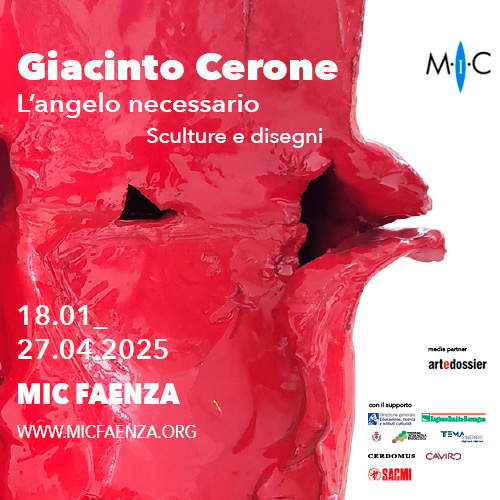Arcevia, State Archaeological Museum reopens. With a new layout
The State Archaeological Museum of Arcevia in the Marche reopens to the public and does so with a new look. The facility, located in the restored and modernized premises adjoining the Cloister of San Francesco, functions as a district museum, bringing together materials from the municipal area pertaining to various eras, from prehistoric times to the threshold of the Roman era.
Here there is a sampling of material from the Paleolithic sites of Ponte di Pietra and Nidastore, the Eneolithic fortified village of Conelle, the stratified settlement of Cava Giacometti from the Final Neolithic to the Bronze Age, and the late Bronze Age highland settlement of Monte Croce Guardia.
The museum from April 20 will be open daily with the following hours: Monday, Tuesday, Friday and Saturday mornings from 8:30 a.m. to 1 p.m., Wednesday and Thursday from 2 p.m. to 7 p.m. On holidays it will follow the following opening hours: first and second Sundays of the month from 2 to 7 p.m., other Sundays and holidays from 8:30 a.m. to 1 p.m. (info and reservations: drm-mar.arcevia@cultura.gov.it; tel. 07319622)
“Arcevia, located in the hinterland of the Marche region, is a reality known, for more than a century, to the entire Italian and international scientific community,” emphasizes Marche Regional Museums Director Luigi Gallo. “Think, for example, of the Montefortino-type helmet, which takes its name precisely from the Gallic helmets found in the necropolis of Arcevia; or of the crowns, preserved at the Marche MAN, exhibited at the Scuderie del Quirinale on the occasion of the Tota Italia in 2021 exhibition, where they attracted attention for their marvelous workmanship. Think also of the Eneolithic moat of Conelle, one of the oldest man-made defensive works; the Bronze Age site of Monte Croce Guardia that is, to this day, the subject of excavations and studies. The Arcevia museum tells not only the ancient history of the area, but is also the symbol of a vibrant local culture: housed inside the former 13th-century convent of St. Francis with 16th-century frescoes in the cloister, it displays part of the collection in an elegant setting that, thanks to a restoration and restoration of the original 18th-century colors, creates a museum environment that is in continuous dialogue with the present from the past.”
“A colleague, a few days ago, asked me to tell you about the work at the museum. I started by describing the caption supports,” says Museum Director Claudia Casavecchia. “They actually encapsulate the idea behind the new exhibit: accessibility and inclusiveness. They are captioned in Italian and English, have space to hook an artifact (original or copy) useful for tactile reading with the corresponding caption in Braille (Italian and English), and are high enough to allow tactile reading even for those in wheelchairs. The design of the new layout, which will come to fruition with the arrangement of the display cases and the related display of Montefortino artifacts, starts precisely from the need to tell the archaeological riches of the Arcevian territory displayed in the museum to a wider target audience. The first step was the creation of a more accessible graphic design. The conclusion, thanks to PNRR funds, will be an archaeological museum usable by more types of disabilities, but at the same time, making the museum narrative a more complete experience for everyone.”
Archaeologist Amanda Zanone, curator of collections, also points out that “the museum reopens to the public with a new face following major works to revise the spaces and the exhibition itinerary, which included rewriting the museum narrative on the scientific, graphic and popular level with a constant look at the needs of full accessibility” adding that “an attempt was made, through a selective and reasoned strategy, to construct a fluid archaeological itinerary, characterized by an integrated reading between material culture and the environment that produced it in order to return the components of its history to the territory. The narrative is enriched with scientific updates and new data. Photographic documentation returns moments of archaeological research. The graphic apparatus and reconstructions make it possible to visualize a prehistoric landscape of the last glaciation or life in a Final Bronze Age village, but also the archaeologist at work intent on reassembling the shape of things. Among the novelties, for the first time the precious gold parure and part of the grave goods from tomb XXIII from the extraordinary Montefortino necropolis are displayed at the Arcevia Museum.”
 |
| Arcevia, State Archaeological Museum reopens. With a new layout |
Warning: the translation into English of the original Italian article was created using automatic tools. We undertake to review all articles, but we do not guarantee the total absence of inaccuracies in the translation due to the program. You can find the original by clicking on the ITA button. If you find any mistake,please contact us.





























